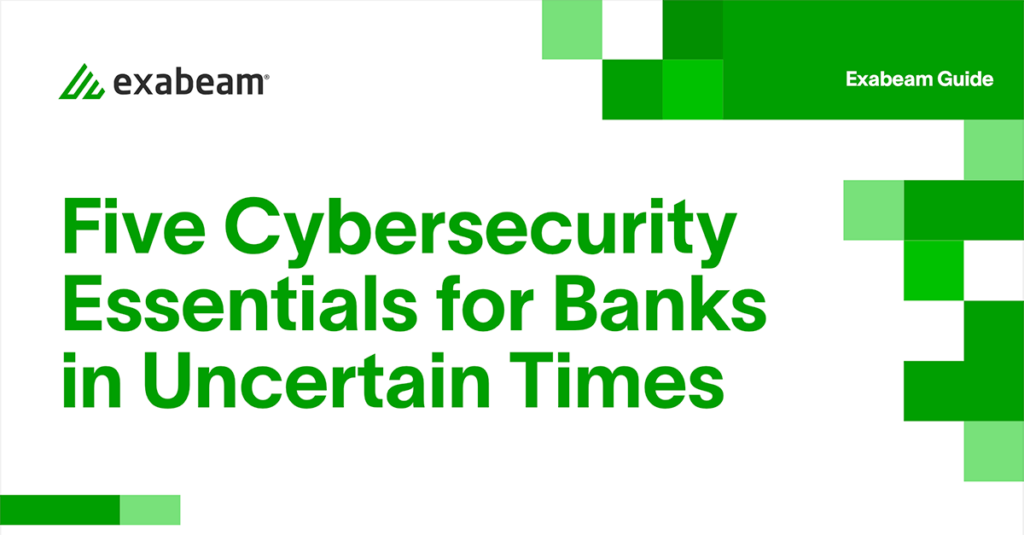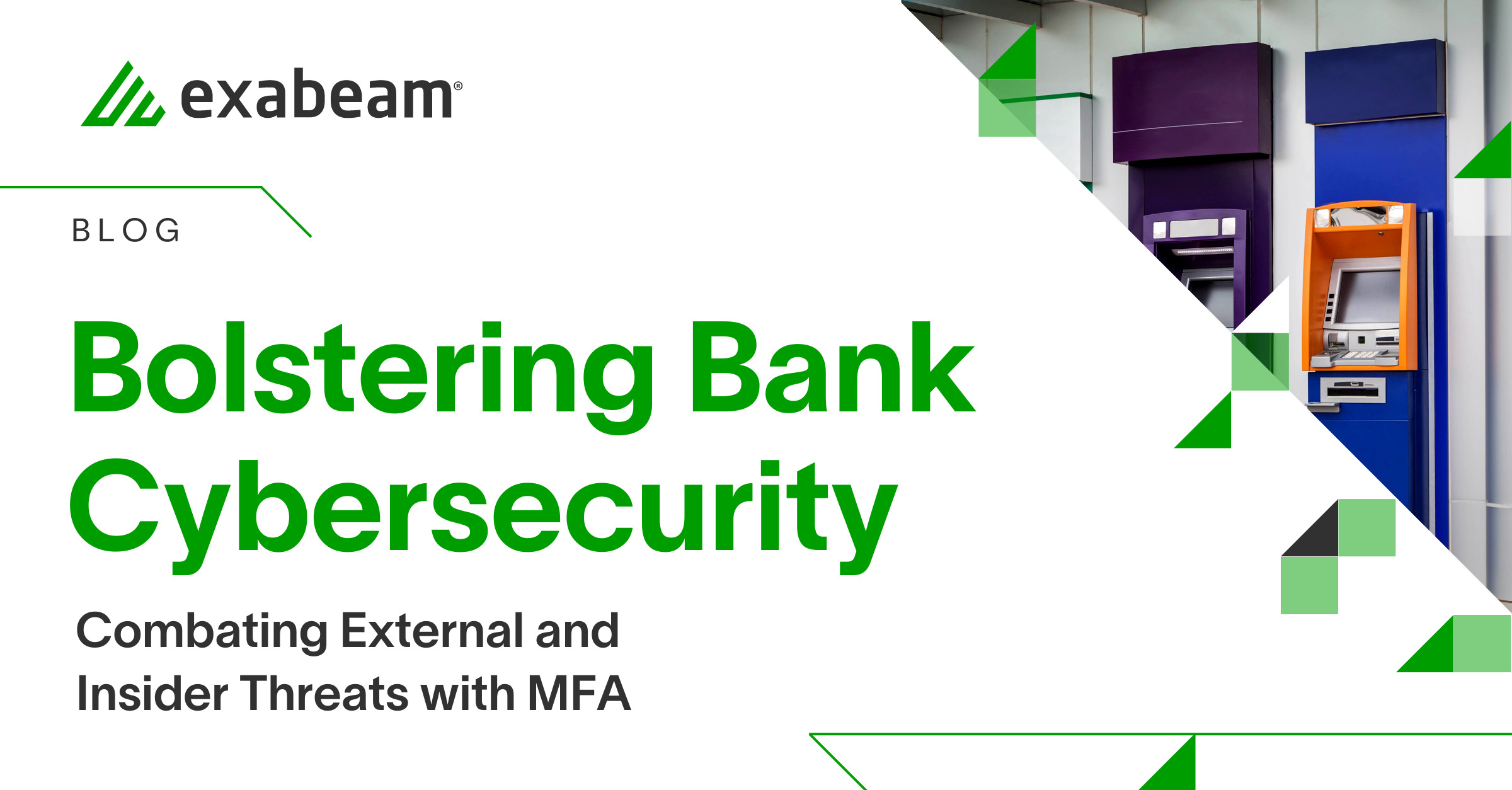Banks and financial institutions are under constant threat from cybercriminals seeking to exploit vulnerabilities in their digital systems. The 2022 Verizon Data Breach Investigations Report highlights the alarming prevalence of insider threats in the financial industry, revealing that 26% of incidents in the sector are attributed to malicious insiders, 56% to negligent insiders, and 18% to compromised insiders. Considering that cyberattacks on the banking industry are estimated to cost $5.97 million per breach — more than a million dollars above the overall average, per the 2022 Cost of a Data Breach report — it’s clear that the sector must prioritize cybersecurity measures to protect against both external and insider threats.
In this series, we’ll detail five strategies banks can use to bolster their defenses, including employee training, security information and event management (SIEM), and preventative measures to minimize the risk of breaches. In this first post, we’ll focus on the importance of multifactor authentication (MFA) in banking and its role in combating cyberthreats. We’ll also explore various types of MFA, its significance in achieving a zero-trust posture, and the benefits it offers to both bank customers and employees.
In this article:
- Multifactor authentication explained
- Achieving a zero-trust posture with MFA
- MFA benefits for banks
- Best practices for MFA implementation in banks
- Securing banks with MFA
- Stay tuned for the next post in the series
Multifactor authentication explained
MFA is a vital security measure for banks, as it helps protect sensitive information and prevent unauthorized account access. By requiring multiple forms of verification, MFA can block external and insider threats. These authentication forms can include:
- Something the user knows — password or PIN
- Something the user has — security token or mobile device
- Something the user is — fingerprint or facial recognition
The prevalence of insider threats and compromised credentials underscores the need for organizations to adopt heightened security measures. MFA makes unauthorized account access more challenging for attackers, even when they obtain a user’s password or other credentials.
Some MFA methods include:
- SMS-based authentication — a one-time code sent to the user’s mobile device
- Hardware tokens — USB keys or smart cards
- Software tokens — smartphone apps generating one-time codes
- Biometric authentication — unique physical characteristics like fingerprints or facial recognition
Achieving a zero-trust posture with MFA
Zero Trust Architecture (ZTA) is a security model that assumes no user, device, or network is inherently trustworthy. Instead, it requires repeated verification of identities and permissions before granting resource access. This approach minimizes unauthorized access risk and helps prevent data breaches.
MFA is essential for achieving a zero-trust posture. By demanding multiple authentication forms, MFA ensures that only legitimately authorized users can access sensitive information, even if their credentials are compromised. This extra security layer is critical in banking, where the stakes are high and the breach consequences are potentially devastating.
MFA benefits for banks
Implementing MFA is imperative for protecting customer financial information and preventing fraud. MFA ensures that even if a customer’s password is compromised, an attacker would need to overcome the additional authentication steps to access the account. The variety of MFA methods makes this highly unlikely.
Banks should also implement MFA for employees with access to sensitive information or systems. This security layer helps prevent unauthorized access, reduces the risk of insider threats, and mitigates the damage caused by phishing attacks or other social engineering tactics.
Regulatory bodies like the Federal Financial Institutions Examination Council (FFIEC) and the European Banking Authority (EBA) now require or strongly recommend MFA for financial institutions. Implementing MFA helps banks comply with regulations and avoid potential fines or penalties.
Best practices for MFA implementation in banks
Banks should evaluate available MFA methods and choose the best fit for their needs and regulatory compliance. Consider ease of use, cost, and security level when selecting an MFA solution.
MFA is only effective if users understand how to use it correctly. Banks should provide customers and employees with clear instructions, training, and MFA benefits. They should also emphasize MFA’s importance as a vital security component to protecting the organization.
Banks should routinely review and update MFA policies to maintain effectiveness against new threats and technology advancements. This process may involve adding new authentication factors, updating software tokens, or upgrading to more secure hardware.
Monitoring MFA usage and effectiveness helps banks identify potential weaknesses or areas needing additional training. Regular monitoring also enables banks to evaluate their MFA policies’ effectiveness and make any necessary adjustments.
Securing banks with MFA
Multifactor authentication is an important tool for combating cyberthreats in the banking industry, as it helps to prevent unauthorized account access, secure sensitive information, and maintain industry regulation compliance. As banks confront increasingly sophisticated cyberattacks, MFA implementation and a comprehensive security strategy, including a zero-trust posture, are essential to preserving the safety and trust of customers and employees.
Bringing MFA activity data into a SIEM system and applying user and entity behavior analytics (UEBA) can quickly help establish a baseline of normal user behavior for employees and help identify abnormal and potentially malicious activity. New-Scale SIEM™ from Exabeam includes a combination of cloud-scale security log management, powerful behavioral analytics, and the ability to automate the threat detection, investigation, and response (TDIR) workflow.
Stay tuned for the next post in the series
In our next post, we’ll explore another critical cyberdefense method for banks: the importance of regularly updating all systems with the latest security patches and updates. By proactively maintaining their digital infrastructure and remaining vigilant, banks can further reinforce their security posture and minimize the risk of cyberattacks, including those involving insider threats. This not only helps protect customers and assets, but also contributes to a more robust and resilient financial ecosystem. Be sure to follow along as we continue our series on essential strategies for banking cybersecurity.
Want to learn more about defending banks against cyberthreats?
Want to learn more about defending banks against cyberthreats?
Read our guide, Five Cybersecurity Essentials for Banks in Uncertain Times.
Banks are facing unprecedented challenges in securing their digital ecosystems while maintaining cost efficiency. With cybercriminals increasingly targeting the financial industry, your bank’s reputation as a trustworthy partner is at stake.
Don’t leave your bank exposed to the growing number of cyberthreats. Download our guide and learn how to bolster your defenses, protect sensitive customer data, and minimize the financial impact of cyberattacks.
You’ll discover:
- The importance of implementing multifactor authentication to secure customer data and prevent unauthorized access
- How to proactively identify potential threats using behavioral analytics
- Why abandoning legacy SIEM technology is essential for a modern and effective cybersecurity approach
With data breach costs averaging nearly $6 million, you can’t afford to leave your bank’s security to chance. Get our essential strategies for protecting your bank against cyberthreats.

Similar Posts
Recent Posts
Stay Informed
Subscribe today and we'll send our latest blog posts right to your inbox, so you can stay ahead of the cybercriminals and defend your organization.
See a world-class SIEM solution in action
Most reported breaches involved lost or stolen credentials. How can you keep pace?
Exabeam delivers SOC teams industry-leading analytics, patented anomaly detection, and Smart Timelines to help teams pinpoint the actions that lead to exploits.
Whether you need a SIEM replacement, a legacy SIEM modernization with XDR, Exabeam offers advanced, modular, and cloud-delivered TDIR.
Get a demo today!












